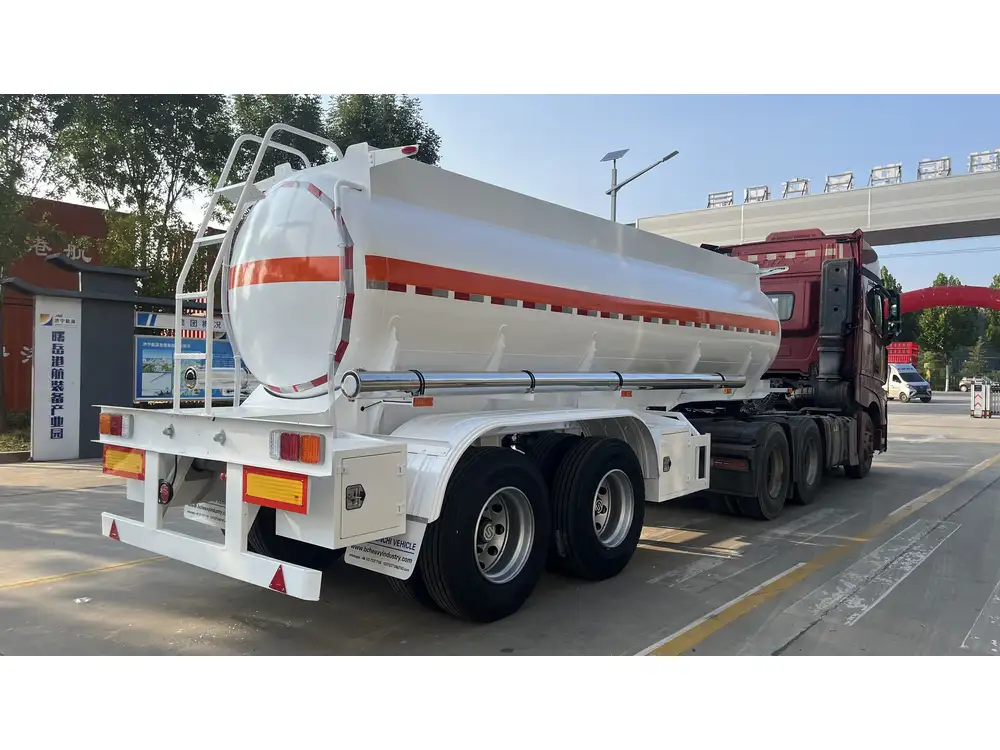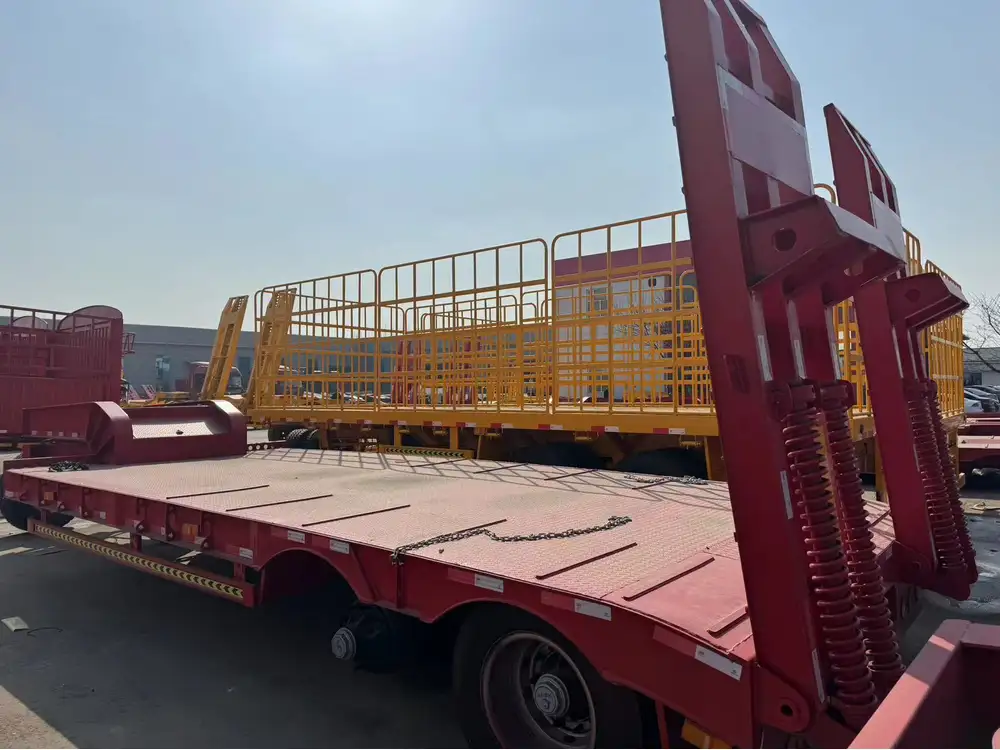Understanding the Importance of ABS Sensors in Semi-Trailers
The Anti-lock Braking System (ABS) is an essential component in ensuring the safety and efficiency of semi-trailer operation. ABS sensors monitor wheel speed and help prevent wheel lock-up during braking, thus maintaining vehicle control. Understanding how to test these sensors is critical for maintenance personnel and truck owners alike. This guide is tailored to offer you a detailed overview of testing ABS sensors on semi-trailers, ensuring you can keep your vehicles in safe operating condition.
Anatomy of the ABS Sensor System in Semi-Trailers
| Component | Function |
|---|---|
| ABS Sensor | Monitors wheel speed and sends data to the ABS control unit. |
| ABS Control Module | Processes sensor data to adjust braking force. |
| Wheel Speed Ring | Works in conjunction with the sensor to detect wheel speed. |
| Brake Hydraulic System | Engages and disengages brake pressure based on ABS control. |
Key Functions of ABS Sensors:
- Speed Monitoring: Continuous tracking of wheel speed.
- Data Transmission: Sends real-time data to the control unit for immediate response.
- Error Detection: Identifies potential faults within the braking system.
Understanding these components is central to performing accurate tests and diagnosing issues with the ABS.

Common Symptoms of Failing ABS Sensors
Before diving into the testing procedures, it’s essential to recognize the symptoms that may indicate a faulty ABS sensor:
- Illuminated ABS Warning Light: A dashboard alert signals a malfunction.
- Uneven or Decreased Braking Performance: Sudden skidding or locking of wheels.
- Inconsistent Warning Signals: Irregular ABS light activity during driving.
- Increased Stopping Distance: Notable changes in known stopping metrics.
Effective Diagnostic Steps
To ensure a thorough approach to ABS sensor testing, we will break down the diagnostic steps in a methodical manner.
Step 1: Gather Necessary Tools
Before beginning your test, ensure you have the appropriate tools at hand:
- Multimeter: For checking voltage and resistance.
- OBD-II Scanner: To diagnose ABS trouble codes.
- Socket/Wrench Set: For physical inspections.
- Clean Cloth/Brush: For cleaning connectors and sensor areas.

Step 2: Preliminary Visual Inspection
Perform an initial visual inspection of the ABS system components:
- Locate the ABS Sensors: They are typically found near each wheel, mounted onto the axle or brake assembly.
- Inspect for Damage: Look for any frayed wires, cracked sensors, or damaged connectors.
- Clean Connections: Dirt accumulation can lead to false readings. Clean the sensor area with a brush or cloth.
Step 3: Read ABS Codes with an OBD-II Scanner
Using an OBD-II scanner can provide immediate insights into existing issues.
- Connect the Scanner: Plug it into the vehicle’s diagnostic port, typically found under the dashboard.
- Retrieve Codes: Follow the scanner’s instructions to read ABS codes.
- Interpret Codes: Each code corresponds to a specific issue, allowing you to focus your testing on affected sensors.
| Common ABS Codes | Description |
|---|---|
| C0035 | Left Front Wheel Speed Sensor Circuit Fault |
| C0040 | Right Front Wheel Speed Sensor Circuit Fault |
| C0045 | Left Rear Wheel Speed Sensor Circuit Fault |
Step 4: Electrical Testing of ABS Sensors
Conduct electrical testing to gauge the functionality of the sensors:
- Disconnect the Sensor Connector: Carefully detach the wiring harness from the ABS sensor.
- Set the Multimeter: Switch your multimeter to measure resistance (ohms).
- Measure Sensor Resistance: Input the probes into the sensor’s terminals.
- Typical Resistance Range: Most ABS sensors should register between 1,000 to 1,500 ohms; consult the vehicle’s manual for specifics.

What to do if Resistance Is Outside Norms
- High Resistance: Indicates potential breaks or shorts in the wiring.
- Low or Infinite Resistance: Suggests a sensor fault requiring replacement.
Step 5: Testing Sensor Output Signal
To ensure the sensor is sending the correct signals to the ABS control module:
- Set Multimeter to AC Voltage: ABS sensors typically produce an AC voltage signal.
- Reattach Sensor Connector: Ensure the sensor is reconnected before proceeding.
- Spin the Wheel: While someone else reads the multimeter, gently rotate the wheel on the respective axle.
| Voltage Output Range | Interpretation |
|---|---|
| 0-0.5V | Indicates sensor failure or a broken connection. |
| Above 0.5V | Input is generally satisfactory; values will vary based on wheel speed. |
Step 6: Verify Wire Integrity
Conduct continuity tests on the wires leading to and from the ABS sensor:
- Disconnect Battery: Ensure safety by disconnecting the negative terminal.
- Use Multimeter: Set to continuity mode and test the wires from the ABS sensor connector to the ABS control module.
- Check Connection: A continuous tone indicates a solid connection; no tone denotes a break in the wire.

Step 7: Professional Calibration and Sensor Replacement
In some scenarios, recalibrating or replacing the ABS sensors can rectify the problem:
- Sensor Replacement: If damaged, install a new ABS sensor following the manufacturer’s guidelines. Ensure all connections are secure and wires are routed correctly.
- Calibrating the System: Consult the vehicle’s service manual for procedures on calibrating the ABS system post-repair.
Frequently Asked Questions about ABS Sensors
How Often Should ABS Sensors Be Tested?
Routine inspection of ABS sensors should be part of regular vehicle maintenance schedules—ideally every six months. However, tests should be performed immediately if warning lights activate.

What Happens If I Ignore a Faulty ABS Sensor?
Failing to address a malfunctioning ABS sensor can lead to diminished braking performance, increasing the risk of accidents and further mechanical failures.
Can I Use Aftermarket ABS Sensors?
While aftermarket ABS sensors can be a cost-effective solution, it’s crucial to ensure they meet quality standards comparable to OEM parts.
How Does Weather Impact ABS Sensors?
Extreme weather conditions can affect sensor operations. For example, cold temperatures may cause wiring brittleness, and ice may obstruct speed rings.

Conclusion
Proficiency in testing ABS sensors is indispensable for anyone involved in semi-trailer maintenance. By adopting a systematic approach coupled with accurate diagnostics, we can ensure that our fleets operate safely and efficiently. Should you have further questions or require detailed assistance, feel free to consult our technical support team or refer to the manufacturer’s guidelines specific to your vehicle model. Regular testing and maintenance will not only extend the lifespan of your semi-trailer but also enhance road safety for everyone involved.



